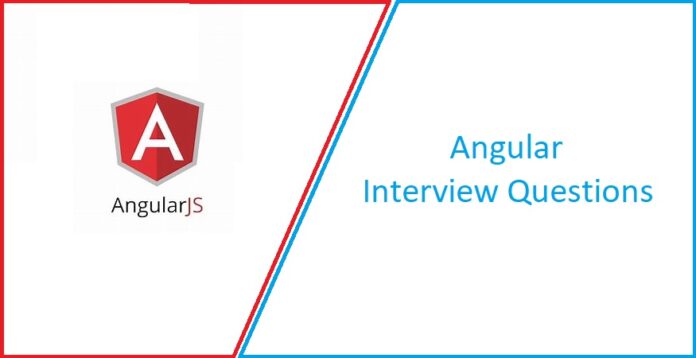Angular Interview Question And Answer :-
1. What is Angular?
Answer:
Angular is a popular open-source web application framework developed by Google. It is written in TypeScript and is used to build dynamic, single-page applications (SPAs). Angular provides a rich set of tools for building applications, including routing, form validation, HTTP services, and dependency injection.
2. What are the key differences between AngularJS and Angular?
Answer:
- Architecture: AngularJS is based on JavaScript and follows a Model-View-Controller (MVC) architecture, while Angular is based on TypeScript and follows a component-based architecture.
- Language: AngularJS uses JavaScript, whereas Angular uses TypeScript, offering better tooling and type safety.
- Performance: Angular provides better performance due to its use of change detection strategies and Ahead-of-Time (AOT) compilation.
- Dependency Injection: Angular has a more sophisticated and flexible dependency injection system compared to AngularJS.
3. What are Components in Angular?
Answer:
Components are the building blocks of an Angular application. A component is a TypeScript class that controls a part of the UI, and it is associated with a template (HTML), style (CSS), and a set of business logic. Components are used to define views and manage the user interface.
Basic structure:
- @Component decorator: It defines the metadata for the component, such as its selector, template, and styles.
- Template: The HTML view.Styles: The CSS to style the component.
@Component({
selector: 'app-my-component',
templateUrl: './my-component.component.html',
styleUrls: ['./my-component.component.css']
})
export class MyComponent {
title = 'Angular Component';
}
4. What are Directives in Angular?
Answer:
Directives are special markers attached to elements in the DOM that can change their behavior or appearance. Angular has three types of directives:
- Structural Directives: Change the DOM layout by adding or removing elements. Example:
*ngIf,*ngFor. - Attribute Directives: Change the appearance or behavior of an element. Example:
ngClass,ngStyle. - Component Directives: These are special directives used to create components (the component itself is a directive).
5. What is Dependency Injection (DI) in Angular?
Answer:
Dependency Injection is a design pattern used to implement Inversion of Control (IoC). In Angular, DI allows the injection of dependencies (services, components) into a class (usually components, services) rather than creating them within the class. This promotes modularity and testability.
@Injectable({
providedIn: 'root',
})
export class MyService {
constructor(private http: HttpClient) {}
}
6. What is Angular’s Change Detection Mechanism?
Answer:
Angular’s change detection mechanism ensures that the view is updated whenever the model (data) changes. Angular uses a tree of components, and each component has a change detector that checks for changes. Angular can detect changes by checking the component’s properties and comparing them with the previous values (using a dirty-checking mechanism). There are different strategies like Default (checks all components) and OnPush (checks only when inputs change or events occur).
7. What is RxJS, and how is it used in Angular?
Answer:
RxJS (Reactive Extensions for JavaScript) is a library for reactive programming using Observables. It allows asynchronous data streams and event handling to be managed in a declarative manner. In Angular, RxJS is used extensively for handling asynchronous operations like HTTP requests, user input events, and more.
Example using RxJS in Angular:
import { Observable } from 'rxjs';
this.http.get('api/data').subscribe((data) => {
console.log(data);
});
8. What is Routing in Angular?
Answer:
Routing in Angular allows navigation between different views or components in a single-page application (SPA). The Angular router provides tools for defining routes, navigating between them, and managing the state of your application.
Basic routing setup:
- Define routes in the
AppRoutingModule. - Use
<router-outlet>in your main template to render the routed views.
this.http.get('api/data').subscribe(
(data) => { console.log(data);
},
(error) => {
console.error(error);
}
);
11. What are Services in Angular?
Answer:
A service is a class that provides specific functionality, such as fetching data from a backend, performing logic, or interacting with other parts of the application. Services are typically injected into components or other services using Angular’s dependency injection system.
Example of a service:
@Injectable({
providedIn: 'root',
})
export class DataService {
constructor(private http: HttpClient) {}
getData() {
return this.http.get('api/data');
}
}
12. What is the purpose of the ngOnInit lifecycle hook?
Answer:
The ngOnInit lifecycle hook is used to perform component initialization tasks. It is called once after Angular has initialized all data-bound properties. It is a good place to set up component state or fetch data from services.
ngOnInit(): void {
this.myService.getData().subscribe((data) => {
this.data = data;
});
}
13. What is the difference between constructor and ngOnInit?
Answer:
constructor: The constructor is used for dependency injection and initialization of class members. It’s called before the component’s input properties are set.ngOnInit(): This lifecycle hook is specifically for component initialization. It’s called after the component’s inputs are set and is used to fetch data or perform any initialization that requires the component to be fully initialized.
14. What is lazy loading in Angular?
Answer:
Lazy loading is a technique in Angular that helps in loading feature modules only when they are required (i.e., when the user navigates to a route that uses the feature). This can significantly reduce the initial loading time of the application by splitting it into smaller chunks.
Example of lazy loading in routing:
const routes: Routes = [
{ path: 'feature', loadChildren: () => import('./feature/feature.module').then(m => m.FeatureModule) }
];
15. What is AOT (Ahead-of-Time) Compilation in Angular?
Answer:
AOT is a process that compiles Angular applications at build time, instead of runtime (which is the default JIT—Just-In-Time compilation). This results in faster rendering and smaller bundle sizes since Angular’s compiler and template rendering are performed during the build process, not in the browser. It improves performance, especially in production environments.



